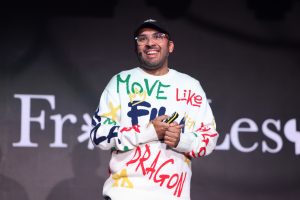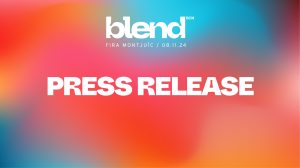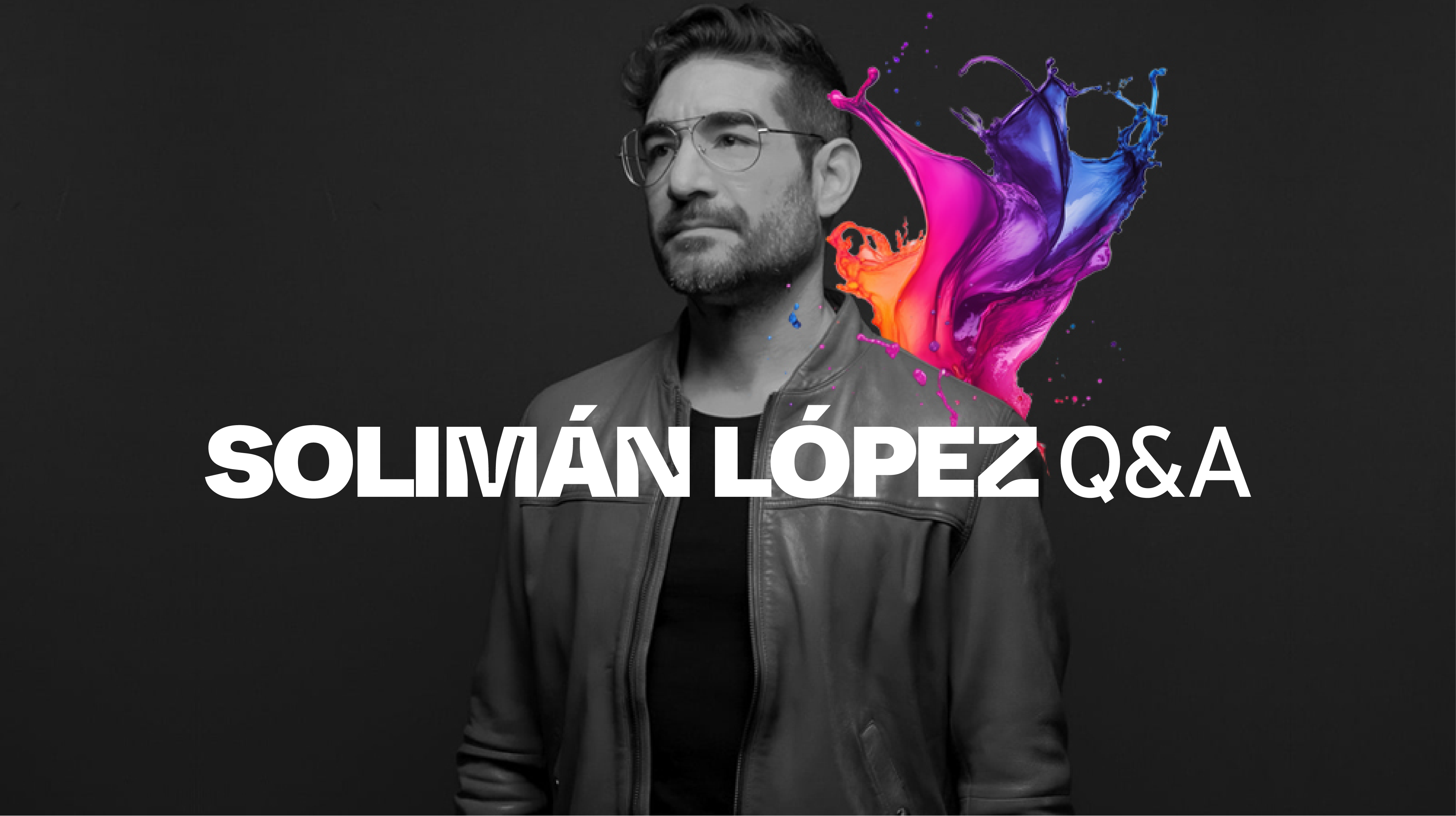
SOLIMÁN LÓPEZ Q&A
What role does collaboration play in your creative process?
For me, it’s very important. In the 21st century, we as artists will have to accept that we are on one side, collaborating with technology [on the other]. We’re [starting to] really understand the possibility that technology can make things worse and, in parallel, you have to be surrounded by different kinds of profiles – in terms of biology, science, interactive coding.
There’s a whole ecosystem that we can take advantage of, because the concept behind the artwork, like society, is very complex. For example, the painter is in front of the canvas, and everything is happening between the canvas and the artist’s brush. But in my perspective, I think the possibilities are huge. So to collaborate with other profiles, I think, is vital.
In my opinion, the future of art is going to be conceptual. So much can be done by machine now. We can call it “art”, but without the artists giving concept to those artworks, we’ll have nothing. So I think that the multidisciplinary practice is the result of a very complex society that we are living in.
We are also living a revolution of formats in terms of art production. Remember ten years ago, you were like, OK, you’re an artist! You are a student of Fine Arts. Fine Art was all those traditional practices that were related to sculpture or painting or drawing. But now we can do whatever we want. I’ve been crossing different borders to say what it means to produce intangible art, because it was very close to the digital world. This is because I experienced different kinds of techniques and collaboration.
Why do you think it is so important for diverse voices and experiences to be represented in creative endeavour?
[To answer this] I think we have to define what we mean by ‘creativity’. It’s become one of the most overused words in the world. Today, creativity is everywhere. I mean, we’re human! We are a consciousness, real life analysers. So creativity was always there, it was society that removed creativity from the space of humans. So when we are trying to give a voice to the people, we’re literally removing this layer of creative avoidance in society. I think it’s very important because, finally, we can find art that is a full, 100% level of expression.
I’ve also been experimenting with software. Some algorithms, the limits are endless. It’s super crazy to say, but there’s no limitation to how I can envision an idea. In fact, the creativity is without this social layer because there are no physical or political limitations. So for me, it’s very important to bring [new and diverse] voices. But also to be careful with some of the words we use, because people are overloaded with information. When we’re talking about blockchain technology, for example. There are a lot of words being spoken about this, but people aren’t really analysing what they’re saying. There’s misinformation in their comments.
How is tech influencing your own creativity, both now and in the future?
I relate most closely to New Media conceptual artists. For me, the application of technology is always, not on top of the artwork, but on the bottom. I support my idea with the application of technology, rather than just using technology to visualise what I’m doing.
I do believe that we, as artists, can get shocked by technology and the assumption it will influence society really quickly. What today seems to be cutting edge, in a couple of days is already old fashioned. We’ve seen it in many different ways. We saw it when artists and photographers started applying Photoshop filters. Same with Arduino and the AI training technology we’re using now. We are already in that moment where people have full access to the same technology as the artist, and the result is quite homogeneous.
Technology influences a lot of my work conceptually. I try to use a technology that fits the concept that I’m creating. I can say that I’m more into the ‘low tech’ rather than the ‘high tech’, because high tech, as I mentioned, is quite risky in terms of what it adds. Also, to finish a concept, we’re not the people who have access to the real high technology. This is something that’s not been published, but some companies are already using it. The military, for example. Sometimes, [as artists] we create our own technology. We take this from here, that from there, and then we create [something new]. But it isn’t really our area. Our aim is to apply technology, not create it.
I think it’s very important to stay calm about what might be coming. We don’t know what kind of technology will arrive in the next couple of years. For sure, artificial intelligence is going to be omnipresent, but I also think that biotechnology is going to play a very important role in the future. The world is changing. All those human longevity solutions – we will see people genetically modified by biotechnology. We need to make changes to the world… the air, the water, is being polluted by microplastics. So, you might say, with this pill, we are going to change the microbiota of your stomach to digest the plastic in a proper way. And you’ll say, OK, I want to take this this pill even if it’s changing some kind of DNA genome.
What creative projects have you got coming up that you’re particularly excited about?
At the moment I’m in the final stages of my project in the Amazon (Capside). We created a collection of 16 spheres [containing] the isolated DNA from tiny samples taken from different trees. So we took soil, roots, branches, leaves and even the water. We put [the DNA] inside a sphere made of rubber. So now we have these artworks distributed in the region across five square kilometers. It could well be the biggest museum in the world!
You can book one of the 1,200 tickets available this year to view them under supervision. The indigenous people will guide you into the forest and explain about [the organisms] from which the DNA has been collected. This is my gift to their community. They are the owners of it.
What I’m producing now is an immersive experience that is based on the idea idea of being blessed by the Amazon rainforest. Once in the space, if you are quiet for more than 30 seconds, a drop of liquid falls on to your head. In the drop, we have a replica of the DNA that we found it in the Amazon. We are in the process of engineering the DNA mapping at the moment.
Next, I’m thinking about the possibility of working with the ocean, its human communities and the effect of ocean-based plastics. We already have an ocean of plastic, and there are a lot of communities that are traveling over the plastic and creating systems on top of it. I’m currently trying to get more information about this for myself [to inspire the work].
Solimán is appearing at Blend Barcelona on 8th November 2024. He’ll be delivering an illuminating Blend Spotlight presentation on cultural fusion: techno consciousness and a concept of the new media art for a better future.
Interview conducted on 12th September 2024.
Blog Category
- PULSE
- News
- Press Release
- Q&A
Latest Blog
Permission to Play: Manon Dave on Creativity and the Power of Play
Manon Dave sharing his journey, philosophy on creativity, and an...
Read MoreOctober 2024: Gaza art installation confirmed
New Barcelona-based creative industry festival Blend is set to have...
Read MoreOctober 2024: GucciGhost to headline Blend
Exciting new Barcelona-based creative festival Blend set to showcase unseen...
Read MoreSeptember 2024: Creative industry backs new festival
Major global powerhouses Nike, Snapchat and Ogilvy have joined key...
Read More
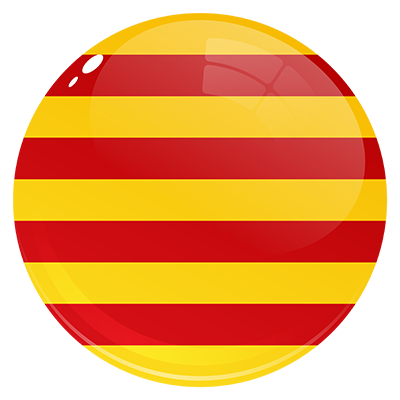 CA
CA
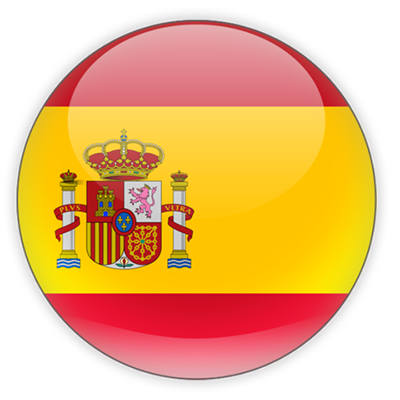 ES
ES
